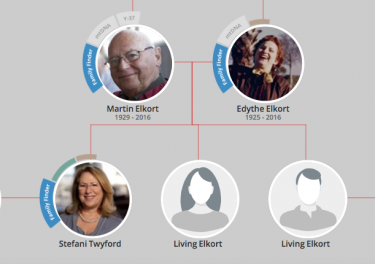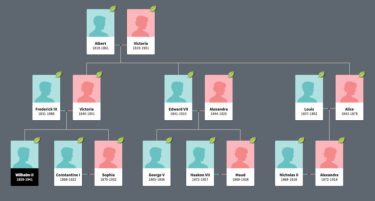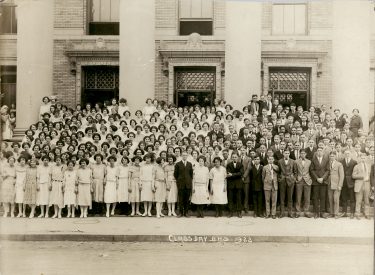So You Took a DNA Test, Now What?
I’ve been doing family genealogy for a long time but have only dug into the DNA aspect of it a couple of years ago. During these years, I’ve learned about chromosomes, centimorgans, MtDNA, Y-DNA, autosomal DNA, triangulation, phasing and some other aspects of testing. I’ve learned a lot. But what I want to share with you falls more into the category of DNA etiquette. It WILL help you find descendants of your ancestors by making it easier for others to figure out how they might be related to you and make contacting you easier.
I have spent a fair amount of time looking for my own descendants of ancestors as well as helping others learn about their matches. And over time, what I have learned is that most people are not making it easy to connect. It’s okay if you don’t know anything, and it’s important to tell people that up front, because there are a lot of people, like me, that will help you if they believe you will do your part and learn from the experience.
The first thing to consider is why you took a DNA test in the first place. There are lots of reasons, probably the most common one is that you got a DNA kit for a gift and decided, sure, what the heck, let’s see what’s out there. Good, we’ll come back to you later. Another reason is you might be interested in finding out about your health risks via the company 23andMe. If you’re not interested in the DNA matches, you can turn that off in your preferences. If you are interested in meeting new cousins, we’ll talk about that later as well. And then there are the rest of you that are truly interested in learning about your ancestry via descendants of your ancestors and that is where this article may be of help to you.
For those of you using 23andMe and do want to know about your DNA matches, the first thing to do is to log into your account. In the upper right hand corner of the home screen next to your name is a small arrow. If you click on that, this menu comes up. 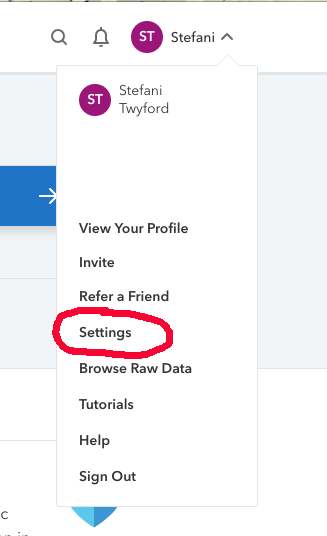 Go to the settings button and it will take you to some basic account information. You can upload a photo of yourself here if you like. Only your DNA matches will be able to see this photo so why not show them what you look like? (Yes, I know I don’t have my photo in here!) They may see a resemblance to themselves there. You can also edit what name they see. If you do not want them to know your real name, you can use an alias or initials. I keep my own name and my deceased relatives transparent but when I test cousins, I typically use their first initial and last name, but again, this is up to you. As you scroll down, there are some privacy and sharing settings which you should read carefully and decide how much you want to make available. But above the Privacy/Sharing area is something called “Enhanced Profile”. This is the important area. Please click on the Edit enhanced profile link and let’s look at what information to provide.
Go to the settings button and it will take you to some basic account information. You can upload a photo of yourself here if you like. Only your DNA matches will be able to see this photo so why not show them what you look like? (Yes, I know I don’t have my photo in here!) They may see a resemblance to themselves there. You can also edit what name they see. If you do not want them to know your real name, you can use an alias or initials. I keep my own name and my deceased relatives transparent but when I test cousins, I typically use their first initial and last name, but again, this is up to you. As you scroll down, there are some privacy and sharing settings which you should read carefully and decide how much you want to make available. But above the Privacy/Sharing area is something called “Enhanced Profile”. This is the important area. Please click on the Edit enhanced profile link and let’s look at what information to provide.
- The first block is where do you call home. You can let people know where you live, or not. To me this is not really important but sort of interesting if perhaps a new cousin realizes you live in the same city. And then you might get an invitation to dinner, which could be nice.
- The next section, where were your ancestors born? This is very important that you fill this out to the best of your knowledge. If all you know is your parents birth locations, then put that in. If you happen to know where your grandparents were born, excellent. Now there is also a field for Additional Birthplaces. If you are lucky enough to know where your great-grandparents or great-great-grandparents were born or lived at one point, add those towns and countries in as well. If, like many descendants of immigrants, all you know is Russia, then just put that in. And as you begin to learn more about your family through research, be sure to update this area occasionally.
- What were your ancestors’ family names? Remember, a family name is a surname, so you only want to add those names that you know for sure belong to you.
- If you happen to have an online family tree, you can share a link to it in this next section. Many of us have trees on Ancestry, Geni or MyHeritage and allowing someone to look at it and find common surnames will make it easier to introduce themselves to you should they share DNA.
- Finally, Introduce Yourself. This is a place where you can share a little about who you are and what you are hoping to find via your DNA relatives.
You can also do the Share and Compare Tutorial if you have other family members also testing on 23andMe.
That’s about it for 23andMe Settings. Now people who see you as a match will be able to get a little bit of information about your ancestry to see if perhaps anything such as towns or surnames ring a bell in their storyline. If you’re not interested in finding cousins, then feel free to turn off DNA relative matching.
Now let’s talk now about FamilyTreeDNA.
Once you log into your account, your name and kit # will be at the top right. If you click on the arrow, a drop-down menu will appear and take you to your account settings. Much like the previous 23andMe interface, under Account Information you can add a photo and there’s a space at the bottom of the page for your Personal Story.
- The next tab along the top is aptly marked Genealogy. This is the important part. Much like the two areas in 23andMe, in this area you can put in your Surnames as well as the towns they are from. You are able to put in as many family names as you know of here so if you know all 8 of your great-grandparents, add them in. If you have additional names such as the maiden name of the woman who married your great-grandfather’s brother, you can add that here as well. The more you fill in this area, the more able others will be to positively identify you as their kin. If you don’t know all the towns yet, that’s okay. If all your documentation just says “Russia” on it, then put that. As you continue your research journey, you can come back and update this area with what you learn.
- Now back toward the top there is a menu for Earliest Known Ancestors. This again is useful and will change over time. It’s basically your Direct Paternal and Direct Maternal ancestors. For me, I know who my gg-grandfather is but only my great-grandmother.
We’re done with these settings now.
Another important setting in FTDNA is way up at the top left menu called myTREE. When you click on that it will take you to a tree interface. If you haven’t uploaded a tree, then all you will see is a circle with you in it.
- If you happen to have a tree online on Ancestry, MyHeritage or Geni, you can download those as a GEDCOM file and upload that here. I don’t particularly like to do that because with some 1200 people in my tree, nobody needs to see all that, and as my tree keeps expanding I don’t particularly want to keep updating this tree.
- So for me, what I have decided to do is manually build out my tree which allows me to then connect with other relatives who have also DNA tested on FTDNA. the most important people to put here are my parents, grandparents and great-grandparents, as well as any of their siblings that I definitely know of.
- How to do this is pretty simple. You just click on the circle of the person you want to add a relationship to, and an interface pops up asking if this new person is a father, mother, spouse, sibling or child. Once you click that relationship, an interface pops up asking for information such as whether they are living, deceased, gender, name, etc. Now this is the cool part. If FTDNA has tested this person, it will connect that and ask you if this is them. If it is, then it shows up on your tree with the DNA connection. The photo below shows me and my mom and dad and how we’re related and what tests relate us.
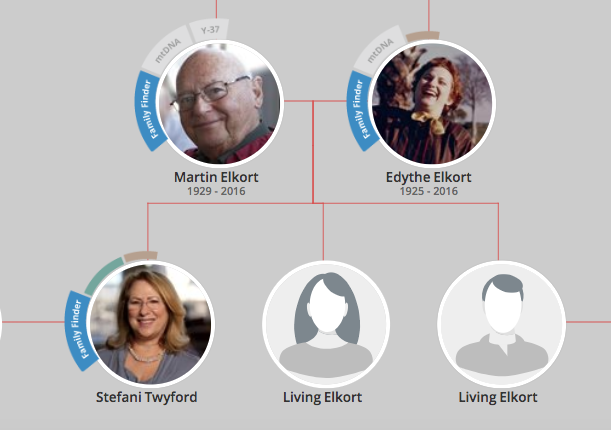
- Then when I go back out to my matches, you will see that FTDNA now identifies my parents as such and then is able to start separating my autosomal DNA matches into who matches on my mother’s side and who matches on my dad’s. Pretty cool, and ultimately VERY helpful.

- Next thing you might want to look at is the myPROJECTS tab at the very top. There are projects based on Surname and projects based on MtDNA and Y-DNA. The nice thing about joining projects is that there are very knowledgeable people managing them that can help you and your DNA information is helpful to some of the research they are doing in identifying genetic migration patterns. It’s all very cool stuff and too much for this article.
So now you have some of the basics filled out on the two testing sites that allow input. This will allow others looking through their match results to learn a little more about you before contacting you.
And now for few etiquette tips.
- If someone does email you through the interface, it’s nice to respond. Even if you know nothing and can’t help them, tell them that. You may be surprised to find someone like me on the other end that will go down your rabbit hole and come up with all sorts of useful information. And maybe not.
- If you decide to email a match, particularly through FTDNA, be so kind as to mention who the match is to, who you are and how much of a match you see. You can even take a screen shot and send it to them. I can’t even begin to count the number of emails I get from someone where the entire content of the email is, “we are related through DNA.” Because I am so curious and am a complete obsessive, I will spend an hour literally looking through the 20 or so DNA kits I manage to see who this person is and what their match is. Often the match is so insignificant that it will not have been worth my time. If I knew that up front, I would have been ever so grateful and probably had more time to write more blog posts.
- Finally, keep some sort of log or journal of the people and their contact information of the DNA matches you’ve been in touch with so you can check to see if you’ve communicated with them previously before you reach out again. I have one guy who is related to an Aunt’s kit that I manage that has written to me every few months, introducing himself, saying we’re cousins, telling me all about himself. He’s done this now 6 times over the past 2 years. I do hope this sweet man finds his people.
One thing I can say is that if you follow these tips, and write to those in your match list that do this as well, you will have much better relatives.

